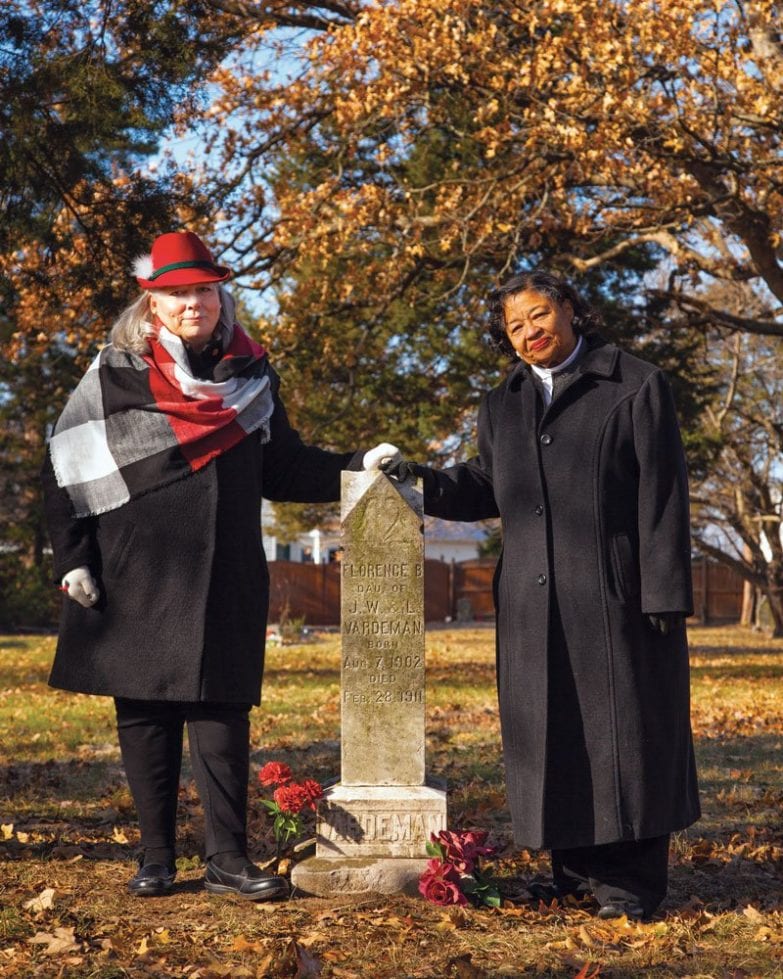PHOTOGRAPHY BY MATT MARCINKOWSKI
The two largest ethnic groups in St. Louis are German-Americans and African-Americans. They have more in common than you might realize.
Cecilia Nadal, an arts educator with a lively sense of social justice, was thinking about today’s raw battle over immigration when she stumbled upon an exhibit catalog, German Abolitionists of Missouri, and “started thinking about the immigrant struggle in that period of time. That they would stand up to the wrongness of a democracy that was not colorblind, when they didn’t even speak English yet, was astounding.”
Nadal had already learned about the precarious lives of St. Louis’ Irish immigrants, using their history in North St. Louis to broker a little warmth between cops with Irish last names and the African-American residents who mistrusted them. Now, she thought, What if more German-Americans and African-Americans knew this history?
She asked John Wright, who’s authored several local African-American cultural histories, how many African-Americans he thought would be familiar with the role German immigrants played in ending slavery in Missouri.
“Very few,” he replied instantly. “We don’t talk about it. And I think very few German-Americans know it, either.” He agreed to be part of whatever event Nadal organized.
So did Dorris Keeven-Franke, director of the Missouri Germans Consortium. She and Nadal talked for six hours straight, then embarked on an unprecedented collaboration. The consortium and Nadal’s organization, Gitana Productions, would gather historians to tell the story, community leaders to connect it to contemporary St. Louis, and artists to interpret the exchange of cultures.
Face of Love: Symposium on the Common History of German and African Americans in Missouri takes place February 23 at the German Cultural Hall on Jefferson. German Consul General Herbert Quelle, who’s coming in from Chicago for the occasion, plays both blues and German folk music on his harmonica, so he’s agreed to join the African-American and German-American performers.
Abolitionists brought back to life by the event include editors of German newspapers (St. Louis supported six); German-born lawyers and exiled revolutionaries; winegrowers; educators; and members of the utopian Giessen Immigration Society, which Keeven-Franke has researched. One of the largest groups to leave Germany, they came to Dutzow, Missouri, in 1834. They’d read a little book published in 1829 by Gottfried Duden, who’d bought land in what’s now Warren County and wanted his compatriots to know of a place where land was cheap and abundant, there was education for all, you could choose your own wife and occupation—in short, you could be free. Those who followed him wanted “to avoid permanently the specter of people without work or bread”; they insisted they’d have no drunks or malingerers, no aristocracy, no prejudice, no slavery.
Fine words—but why risk taking such a principled stand in a new land?
First, they were highly educated, Keeven-Franke explains, their minds steeped like strong tea in the ideals of philosophy, literature, and history—especially their own. Germany at the time was a jumble of principalities, all vying for the favor of the king. Those with money and power whispered into his ear. Those who preferred American notions of democracy…left.
Once here, they set to work building the sort of society they’d longed for, cohesive and egalitarian. It was obvious to them that democracy could never coexist with slavery, and they weren’t about to stand by and watch the promise of America dissolve. And so they fought, seeking to preserve the utopian future on which they’d staked their lives.
Their commitment affected Missouri profoundly. In the 1830s, 120,000 Germans came to the U.S., and one-third of them settled in Missouri. The next wave, the ’48ers, were even more idealistic and radical. To this day, St. Louis is the third most German-American city in the nation.
Sydney Norton, author of the catalog that lit Nadal’s imagination, teaches German at Saint Louis University. The abolitionist who most intrigued her was Arnold Krekel. The others arrived with money, she explains, but “Krekel was self-made.” His mother died of cholera on the journey to this country, and he split rails and worked as a farmhand to put himself through law school. A colonel in the Union Army during the Civil War, he presided, at the war’s end, over Missouri’s Constitutional Convention. Members voted 60–4 to abolish slavery, and Krekel signed the proclamation.
Meanwhile, Krekel had bought land in what’s now O’Fallon, Missouri. Next to his land was Sage Chapel Cemetery, burial ground of 17 men and women who were born into slavery—then emancipated by the proclamation Krekel signed. Sage Chapel continued as an African-American cemetery through the 1960s, then fell into disrepair. Today, it is maintained by the city of O’Fallon—which Nadal had always thought of as an enclave of white flight but actually had a thriving African-American community until the 1950s. Thanks to Keeven-Franke’s research, Sage Chapel Cemetery was just placed on the National Historic Register.
So many years later, does all this intersecting history even matter? Wright nods. “It brings people together. We have more in common than we think.”

